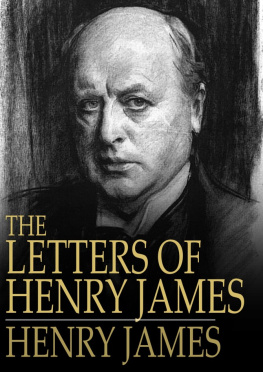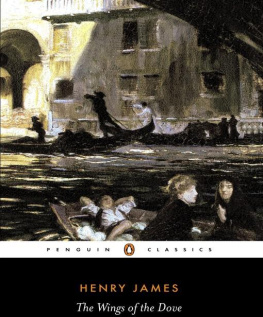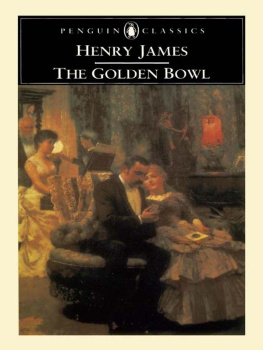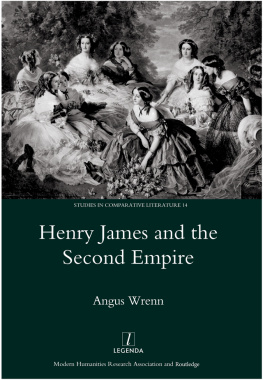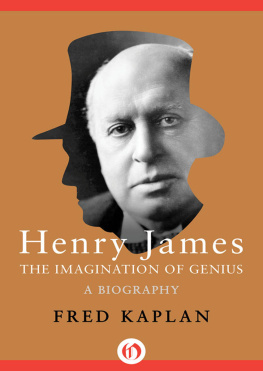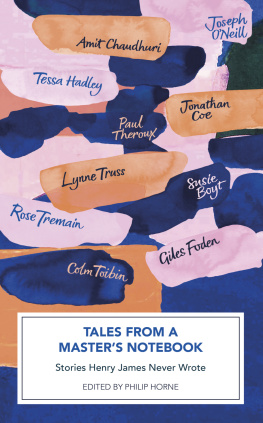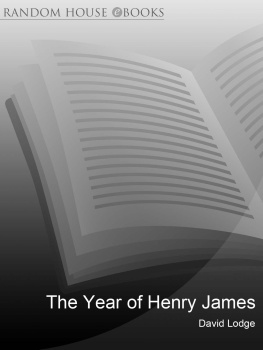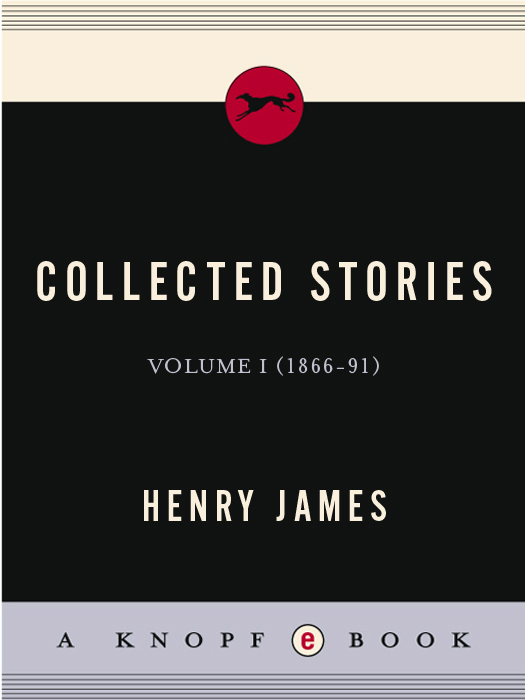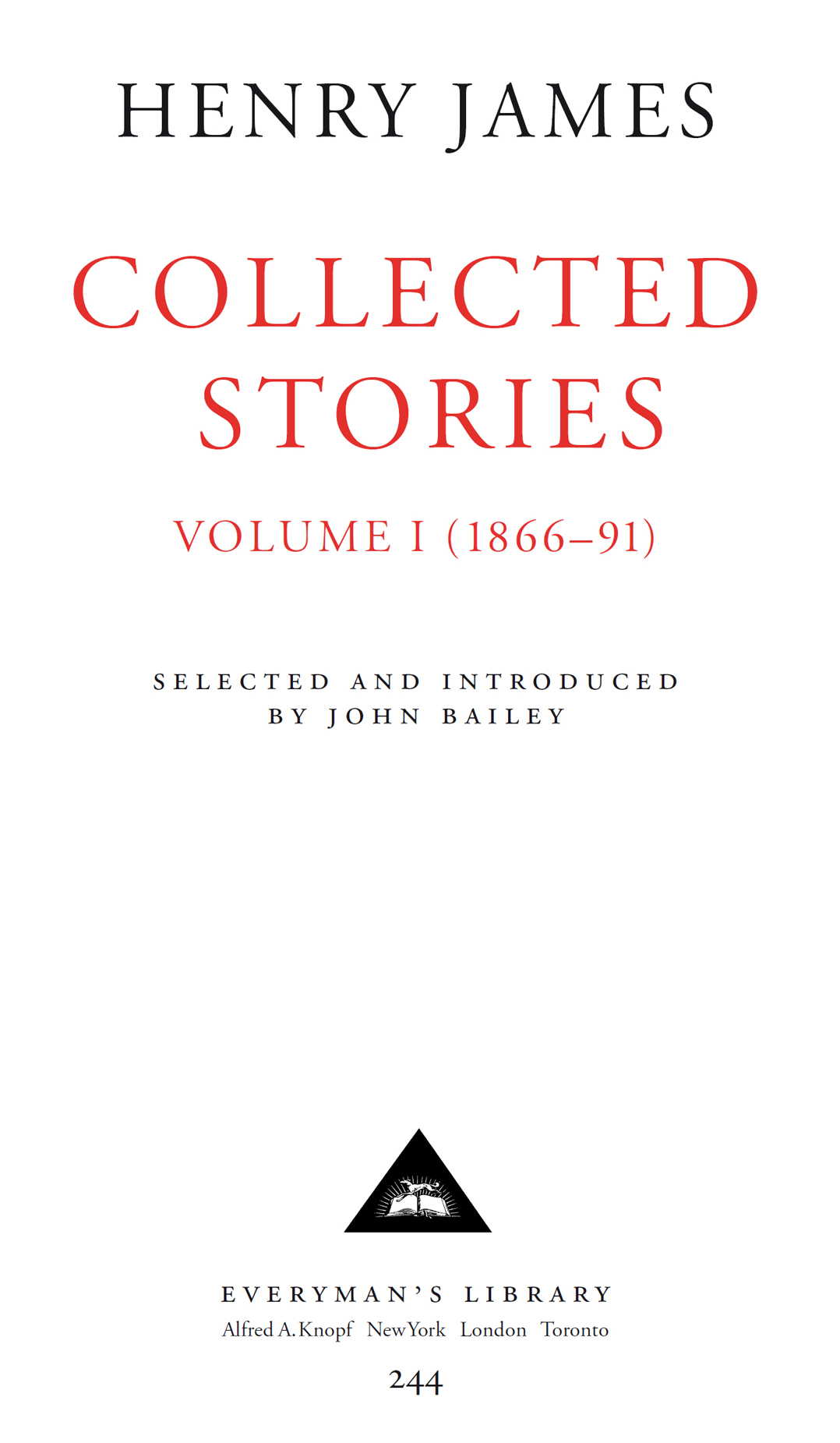All rights reserved. Published in the United States by Alfred A. Knopf, a division of Random House, Inc., New York, and in Canada by Random House of Canada Limited, Toronto. Distributed by Random House, Inc., New York. Published in the United Kingdom by Everymans Library, Northburgh House, 10 Northburgh Street, London EC1V 0AT, and distributed by Random House (UK) Ltd.
CONTENTS


INTRODUCTION


In his stories James reveals himself more deeply and comprehensively than he does anywhere in his novels. That is necessarily a bold generalization, but I believe it to be true. By way of example and of contrast let us select two of the earliest stories in this volume, one of them, A Landscape-Painter, only the third that the young author wrote. Both are little masterpieces, as good in their own way as anything by the mature master. The editor of the Atlantic Monthly must have been pleased to receive stories of this quality. And yet both these tales carry all the signs of an apprentice a highly skilful and promising apprentice who is still feeling his way. That is precisely the reason for their freshness and their charm. James is still too uncertain of himself and his craft not to be direct almost touchingly direct. He cannot help but give away both himself and his method. And that imparts to these two very contrasting tales their timbre, as James himself would have put it, and their vividness.
Of the two A Landscape-Painter and A Light Man I myself prefer the former. The plot is almost comically artificial, but James was always to like the diary form and the story makes a perfect companion to his sense of place, already so well developed his sense here of the sea, the islands, the little New England fishing town, the heroine herself as a figure in the landscape. All are seen just as a painter might see them, and remind us that James himself, when young, had the idea of becoming a painter, and studied for a while at Newport on the Atlantic coast. Newport was a much more fashionable place than Chowderville, a point James makes a joke of in the story, but the choice of setting indicates the engaging fact that the stories in bulk can be seen to form a kind of biography of Jamess own changing moods and his intentions, his likes and dislikes, his boredom and his enthusiasms his enthusiasms above all. They cover the whole span of his creative life; and some of the last that he wrote, when he revisited New York in the twentieth century and found it horribly changed, remind us by contrast of his wonderful early and, as it were, innocent sense of the pristine beauty of the American scene, as revealed in A Landscape-Painter.
This is the same enthusiasm which James exaggerates almost to the point of parody when describing the charms of English scenery in A Passionate Pilgrim, or when, in a later story, he gives us what must be one of the most passionately vivid accounts ever written of the splendours of the Venetian Duomo where I wandered beneath these reverted cups of scintillating darkness, stumbling on the great stony swells of the pavement where a thousand once-bright fragments glimmer through the long attrition of idle feet and devoted knees. (Those two adjectives confer with each other brilliantly, and surely Venetian mosaic has never been better described.)
To return briefly to that pioneer tale, A Landscape-Painter. It is an idyll with a dark ending, a formula in which Jamess stories may be said to specialize, but one never done more subtly, or in a sense more disquietingly. Locksleys innocence, a kind of innocence in which harmless vanity plays a decided part, is disillusioned for the second time. No girl can love so rich a man, even so quietly and obscurely rich a man, for himself alone, and as she apparently expects him to love her. If you really love me, says Miriam after she has secretly read his diary and discovered how rich he is and I think you do you will not let this make any difference. She has never said she loved him: she said she would be his wife, and I am incapable of more than one deception.
This has the appearance of a happy ending, but it is also an ending from which the real life of the story has significantly departed, just as vitality has departed from Locksleys own life with the realization that he will never write any more in his diary, and perhaps never paint any more either. This apparently unmotivated decision takes us deep into Jamess own heart and mind. Locksley has made the irrevocable decision: he has found himself committed to normal life, instead of to the life of imagination and creation represented by his diary and his painting. His painting has earned respect from the anonymous narrator of the tale, into whose hands the diary has passed. Locksley, we learn from this narrator, is dead. Life as a married man even as a man married to the once bewitching Miriam offers no more for him it seems, and so he dies. The story ends on an appropriate note of solution, and yet nothing but emptiness and failure appear to lie ahead.
Miriam too has changed, although the shift in tone abruptly fixed up by the young author in his concluding paragraphs must seem an artificial one. From the beautifully observed and naturalistically recorded rustic maiden with whom Locksley gradually falls in love, she has suddenly become like the word-perfect heroine at the close of a play a Restoration comedy, or the type of neat Comdie franaise production with which the young James was already familiar. But artificial as it is, this change exactly suits what has occurred. Miriam is now a rich married woman. She has changed just as her new husband has changed, and neither can ever be the same again. Young as he was, James already had the obscure horror of marriage and domesticity which in time became, so to speak, natural to him. He can never bear the young men in his stories to get married, and indeed Locksley is almost the only one who does. It is a far far better thing to forbear, to renounce, to remain celibate, and James sees to it that this is the fate to befall most of his heroes, and very often his heroines too. He arranges the matter by means of a plot, and yet the stories get their characteristic resonance and meaning from his own much deeper and more personal instincts.


